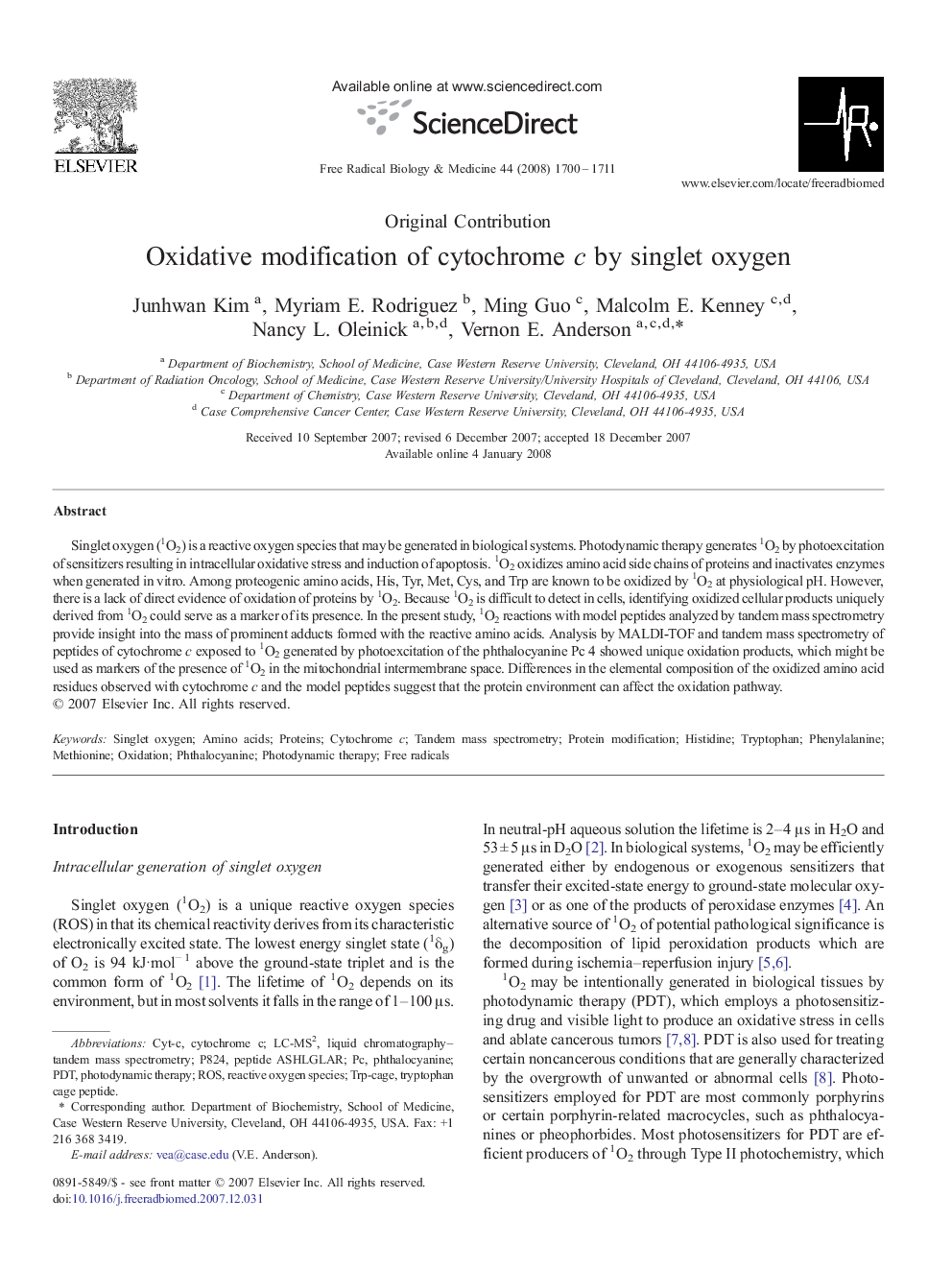| Article ID | Journal | Published Year | Pages | File Type |
|---|---|---|---|---|
| 1911071 | Free Radical Biology and Medicine | 2008 | 12 Pages |
Singlet oxygen (1O2) is a reactive oxygen species that may be generated in biological systems. Photodynamic therapy generates 1O2 by photoexcitation of sensitizers resulting in intracellular oxidative stress and induction of apoptosis. 1O2 oxidizes amino acid side chains of proteins and inactivates enzymes when generated in vitro. Among proteogenic amino acids, His, Tyr, Met, Cys, and Trp are known to be oxidized by 1O2 at physiological pH. However, there is a lack of direct evidence of oxidation of proteins by 1O2. Because 1O2 is difficult to detect in cells, identifying oxidized cellular products uniquely derived from 1O2 could serve as a marker of its presence. In the present study, 1O2 reactions with model peptides analyzed by tandem mass spectrometry provide insight into the mass of prominent adducts formed with the reactive amino acids. Analysis by MALDI-TOF and tandem mass spectrometry of peptides of cytochrome c exposed to 1O2 generated by photoexcitation of the phthalocyanine Pc 4 showed unique oxidation products, which might be used as markers of the presence of 1O2 in the mitochondrial intermembrane space. Differences in the elemental composition of the oxidized amino acid residues observed with cytochrome c and the model peptides suggest that the protein environment can affect the oxidation pathway.
